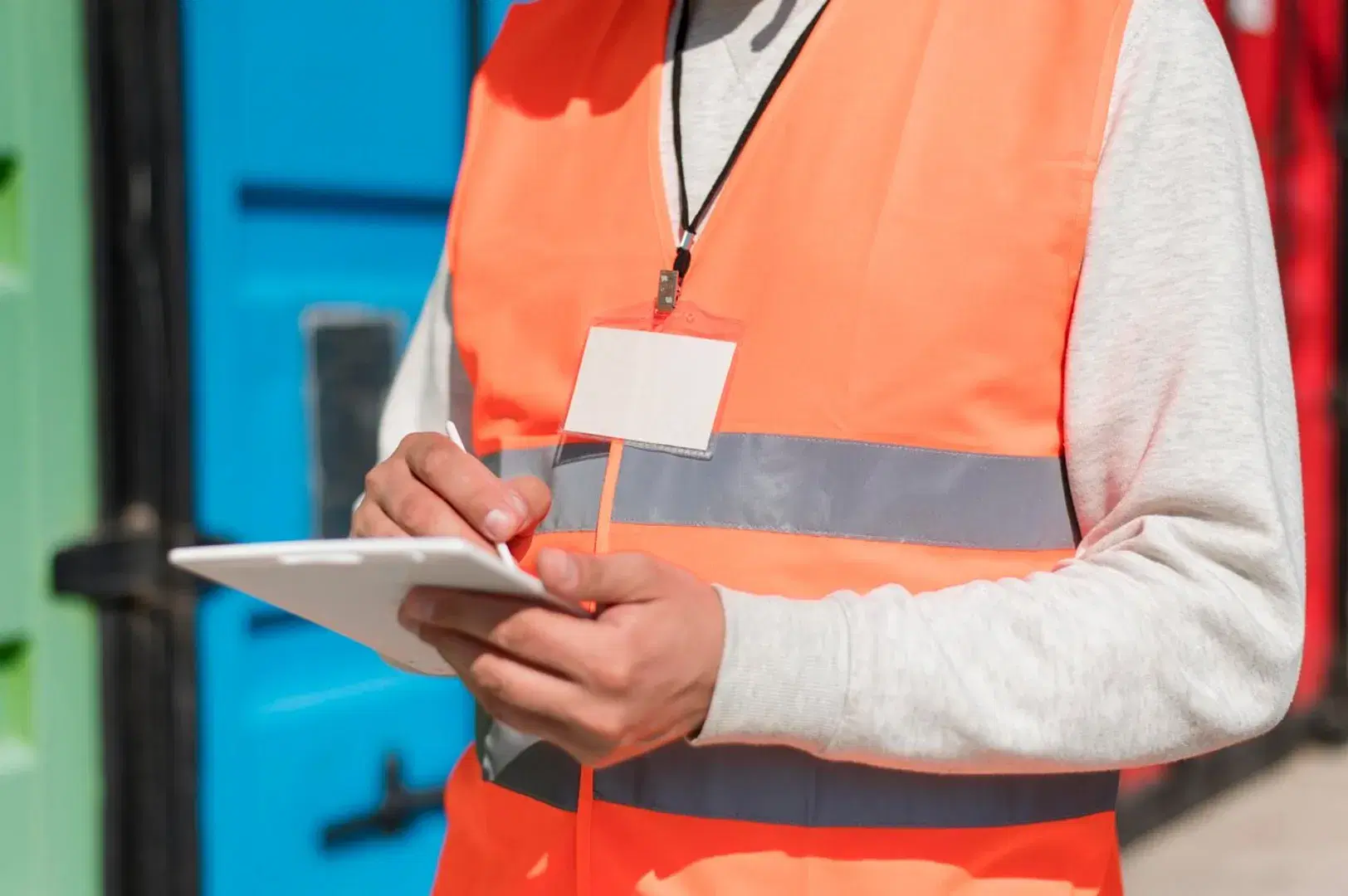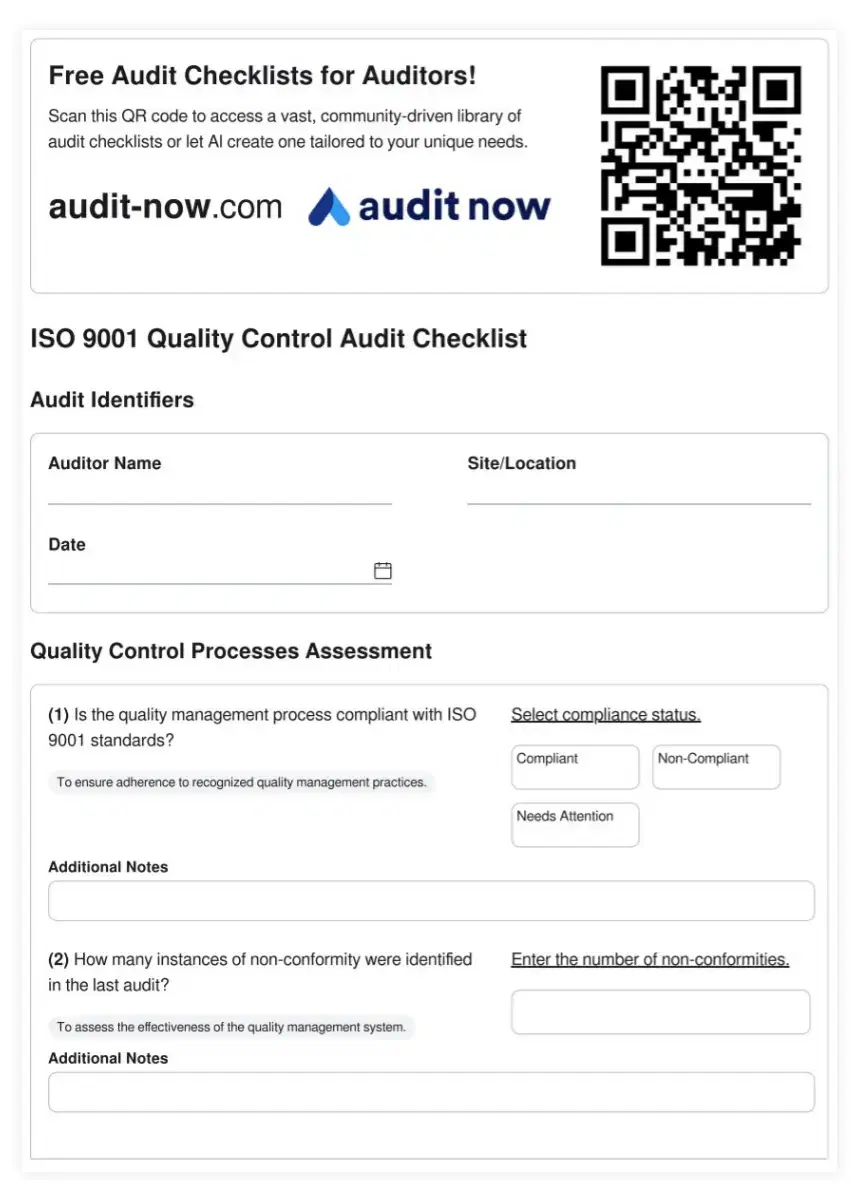Health and Safety Officer Checklists

Featured Checklist

Field Safety Assessment Checklist
The Field Safety Assessment Checklist is a crucial tool for ensuring the safety and well-being of personnel working in various field environments. This comprehensive checklist addresses potential hazards, equipment safety, and emergency preparedness, helping organizations maintain compliance with safety regulations and minimize workplace accidents. By systematically evaluating field conditions and safety measures, this checklist empowers safety managers and field supervisors to identify and mitigate risks, ultimately creating a safer work environment for all employees.
Health and Safety Officer Operational Overview
Health and Safety Officers face many challenges in keeping workplaces safe. They must spot dangers, teach workers about safety, and make sure everyone follows the rules. When things go wrong, it can lead to injuries, fines, and damage to the company's reputation.
Good safety practices help businesses run smoothly. They cut down on accidents, save money, and make workers happier. Safety is a big part of quality management too. It shows that a company cares about doing things right.
To handle these challenges, Health and Safety Officer needs to do regular checks. Let's look at why audits are so important for keeping everyone safe.
Core Audit Requirements & Checklist Importance
Safety audits are key to finding and fixing problems before they cause harm. They involve looking at all parts of the workplace, from machines to procedures. Using checklists makes sure nothing gets missed during these checks.
Checklists help Health and Safety Officers stay organized. They provide a clear plan for what to inspect and when. This system helps catch small issues before they become big problems. It also creates a record of safety efforts, which is important for following the law.
Every workplace has its own safety needs, but some areas are always important to check:
- Emergency preparedness: Fire exits, alarms, and evacuation plans
- Personal protective equipment: Availability and proper use
- Hazardous materials: Storage, handling, and disposal
- Machine safety: Guards, lockout procedures, and maintenance
- Training records: Up-to-date safety training for all employees
Workplace Hazard Assessment
Health and Safety Officers must be experts at spotting dangers. This means looking at how work is done and thinking about what could go wrong. In factories, this might involve checking machine guards or looking for trip hazards. In offices, it could mean checking ergonomics or air quality.
Best practices include regular walkthroughs, talking to workers about their concerns, and keeping up with new safety guidelines. It's important to look at both obvious and hidden risks. For example, stress and long hours can be just as dangerous as physical hazards.
Quality control in safety means always improving. This could involve updating safety gear, changing how tasks are done, or finding new ways to train workers. The goal is to make the workplace safer over time, not just meet the minimum standards.
Incident Investigation and Prevention
When accidents happen, Health and Safety Officers need to find out why. This means looking closely at what went wrong and how to stop it from happening again. Good investigations look at all factors, not just human error.
Risk management is about planning ahead. This might mean ranking hazards by how likely and serious they are. Then, officers can focus on fixing the biggest risks first. For example, in a warehouse, this could mean improving forklift safety procedures before tackling less urgent issues.
Measuring safety performance helps show if things are getting better. This could include tracking the number of near-misses, the time since the last accident, or how many safety suggestions workers make. These numbers help show if safety efforts are working and where to focus next.
Digital Transformation with Audit Now
Modern technology makes safety checks easier and more effective. Audit Now offers smart checklists that learn from past audits. This means they can suggest extra checks based on what's been found before. The app also lets teams work together in real-time, so everyone stays up to date on safety issues.
With a big library of templates, Audit Now helps Health and Safety Officers get started quickly. These ready-made checklists cover common safety topics and can be easily customized. This saves time and makes sure nothing important gets overlooked.
Ready to improve your safety audits? Check out our template library at audit-now.com/templates/. Need a custom checklist? Try our AI checklist generator at audit-now.com/generate-ai-checklist/.
Most Popular 10 Health and Safety Officer Checklists
PUWER Work Equipment Safety Checklist
Field Safety Assessment Checklist
Allergen Control Checklist for Hospitality
Pre-task Safety Risk Assessment Checklist